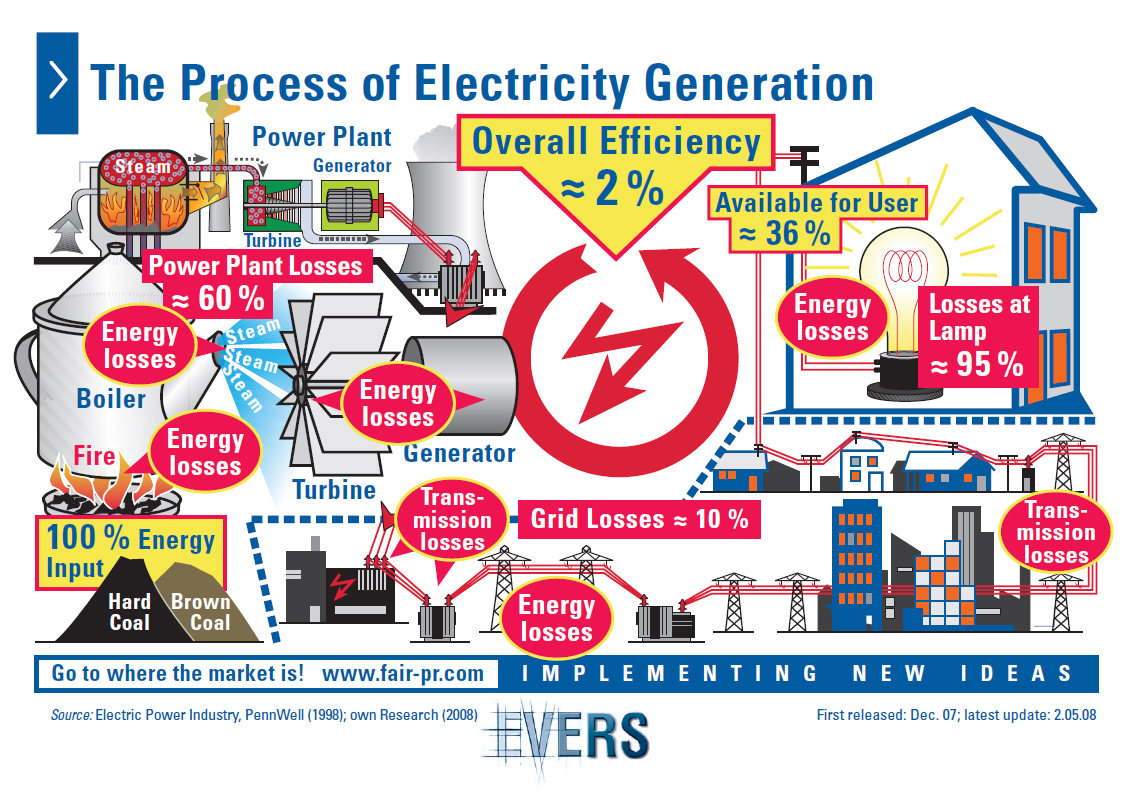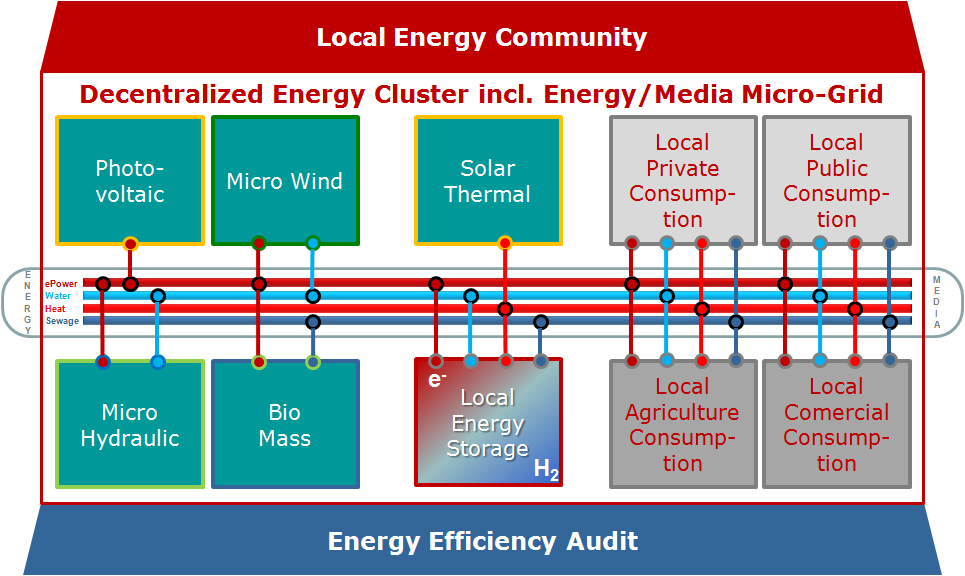The quantum leap:
ENERGY COMMUNITIES ('EC')
1. EC Abstract
A QUANTUM LEAP for current national energy supply systems will be the establishment of new local ENERGY COMMUNITIES, operating based on local and almost autonomous energy system architectures (DECENTRALIZED ENERGY CLUSTER) and new business models. Those models shall focus on the fact that the EC Members are acting often simultaneously as DEC investors as well as energy producers and consumers.
The individual energy balance of each EC Member will be maintained via local energy accounts, whereof energy can be acquired, by using locally valid Energy Cards for (i.e. wireless) onsite trading. For example, while EC Members are producing solar energy or distributing their waste efficiently to the local waste conversion plant (pyrolysis), they are continuously accumulating balance on their energy accounts. These balances can be utilized for credits, i.e. when fuelling the car at the local fuelling station, provided that the consumed energy carrier (i.e. electricity or hydrogen), has been generated from local energy community resources.
TOP2. Decentralized Energy Cluster ('DEC')
Renewable primary energy source (Solar, wind, waste, biomass etc.), available based on their nature in the direct neighborhood of the final energy application, have new requirements on an energy transmission system. A new energy system architecture has to be applied, the DECENTRALIZED ENERGY CLUSTER.
Those DEC are based on local Renewable Energy (RE) sources, local RE storage media, local RE applications and a local energy transmission grid (‘Micro-Grid’), successfully applying the Smart Grid concept for a balanced energy distribution, within a DEC and between them.
The rapidly arising divers DECs with their local Micro-Grids will be furthermore connected via the national Macro-Grid, to enable cross regional energy balancing, during time windows of high or low energy demand/capacity. But, the focus shall remain on the establishment of many new Micro-Grids and not on a new Macro-Grid!
In order to avoid further landscape impacts, the necessarily remaining part of the national Macro-Grid shall be implemented ideally as mostly new buried HVDC cable lines!
This shall enable an efficient integration of still centralized established renewable energy sources (i.e. Off-shore wind, Hydro power, waste conversion etc.). Accordingly those sources can be integrated efficiently into the overall and cross-regional energy supply system.
The DECs shall provide a mixture of separated AC and DC transmission to corresponding local AC and DC applications. There shall be a special focus on loss optimized transmissions between AC/DC sources and AC/DC applications!
The more technical description of the DEC will be provided soon at site!
TOP3. EC Objectives:
- Accelerate potential self dynamics, for the establishment of ENERGY COMMUNITIES with local decentralized renewable energy generation, storage, transmission and application
- Apply and enhance the Spanish Electricity Feed Act 2010 as the optimized framework for the development of the ENERGY COMMUNITIES
- Avoid unnecessary extensions of current national energy transmission networks, with their substantial transmission losses and landscape impacts
- Establish local ENERGY COMMUNITIES as pilots to supersede current single AC transmission and enable future oriented network mix for AC and DC generation, transmission and application
- Increase energy efficiency at ENERGY COMMUNITY members: public, private and commercial
- Avoid future treats from Peak Oil consequences (expected substantial energy price increases, due to shortness of global resources) for private, commercial and public ENERGY COMMUNITIES members
- Accelerate Spain's leadership role in the innovative breakthrough establishment of local ENERGY COMMUNITIES, based on natural local access rates to renewable energy and the already dynamically growing local exploitation
4. EC Economic Benefits:
- Reduced energy distribution losses, through separated local AC/DC transmission
- Reduced energy distribution costs (operative and at installation)
- Reduction of landscape impacts through avoided transmission line extensions
- Increased competitiveness and revenues for commercial members of those ENERGY COMMUNITIES, through advancing independence from global energy market price fluctuations
- Increased local labor in the ENERGY COMMUNITY infrastructure establishment and maintenance services and additionally in related technology provisioning sectors
- Accelerated the Win-Win-Commercialization of technologies, know-how, services and Best Management Practices required for successful ENERGY COMMUNITY operations
- Gained profits from ENERGY COMMUNITIES should be reinvested in R&D and test applications primarily in the areas of:
- Renewable Energy technologies
- Innovative, local network systems
- Technologies for local energy storage



 Energy Continuum - Landscape Renewable Energy Solutions
Energy Continuum - Landscape Renewable Energy Solutions


